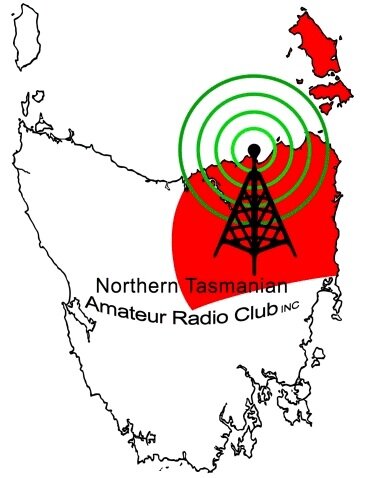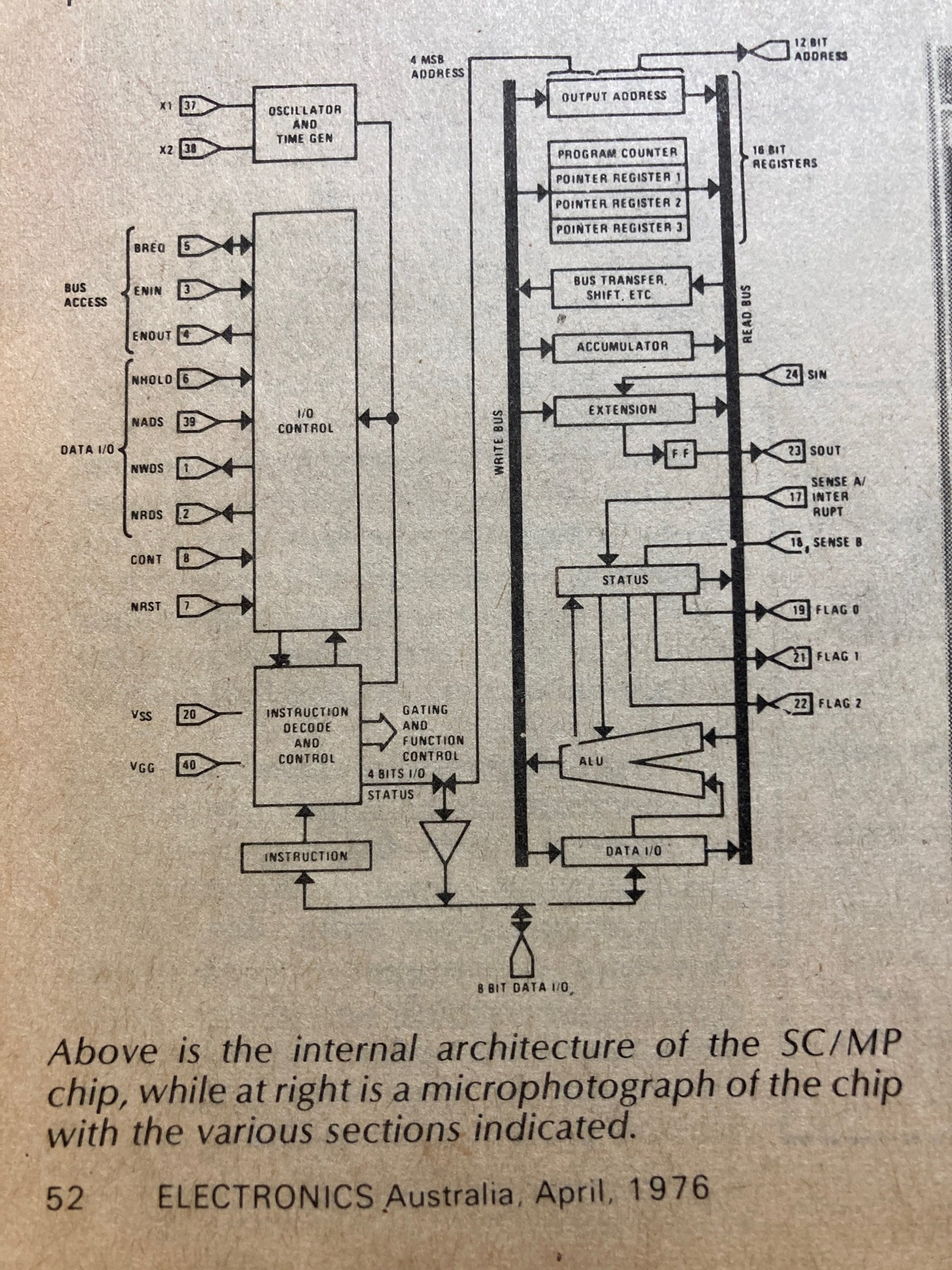Broadcast - 28 January 2024
Now for a leftover from the last Club Technical night, and it came about from a REAST DATV Experimenters Night a couple of weeks ago. Justin VK7TW unleashed a massive Nostalgia hit for quite a few of us. He covered the Zilog Z80, 8-bit microprocessor and the Micro-Professor which was a Z80 based teaching resource from the early 80s.
DATV Experimenter's Night - Z80s, MicroProfessor, Glass Typewriter, K9 + more - YouTube
After listening to Justin’s excellent presentation Andre’ VK7ZAB was reminded he also did Z80 programming while working at the ABC and participated in digital training sessions.
Andre’ was looking for a home project to compliment and reinforce this ABC digital training. The Z80 systems were quite expensive. However, in the Electronics Australia magazine, there was a more affordable “Mini Scamp” project. This came out in the May and June editions of 1977. This unit used the new National Semiconductor 8-bit microprocessor released in April 1976. It was called the SC/MP or as it was pronounced “scamp” and it stood for Simple, Cost-effective Micro Processor.
The completed kit design looked like the classic retro computer, the one that comes to mind when we think of computers from that time period. It had a flat vertical front panel with a row of eight LEDs for data byte display and a row of eight toggle switches immediately below for data byte entry. With another row of eight toggle switches lower down for the address byte. The use of LEDs and switches provided the “human” interface and at the time was a physical alternative to an expensive Terminal.
Andre’ ended up buying another version of the Scamp that had an option of a keyboard kit, which was reviewed in Electronics Australia July 1977. It was marketed by National Semiconductors and was known as the SCAMP Development Board and included a much needed and very useful prototyping area. To get things up and usable some of this area was used to add extra parts to interface the keyboard, which was a calculator case fitted with twenty buttons and a LED display. A ribbon cable connected the two together. The prototyping area also included nine extra IC sockets and 300 wire wrap joint points. All prototyping was done with wire wrap connections. Luckily the unit came with a small hand twist tool for the wire wrapping, as well as plenty of suitable wire.
Programming was done in HEX for both data and address with the displaying of address location and its data also in HEX. Needless to say it required a lot of button presses to load a programme.
Two major differences between the Scamp and the Intel 8080 type architecture were:
· The use of Static RAM, as it did not need refresh circuitry included in the processor
· The use of 8-bit serial input-output register to communicate with the Arithmetic Logic Units etc, with its saving in parallel bus routing and circuitry in the processor
These two architectural approaches simplified the chip “die” and saved space within the central processor.
This allowed for the inclusion of circuitry for read, write and address-ready data strobes, negating the need for quite a bit of external logic interfacing components around the microprocessor chip. This allowed for direct interfacing with a wide variety of standard memory circuits including ROM’s, RAM’s and PROMs. The overall result made it cheaper to manufacture and kept the overall cost down to us.
The use of static RAM also allowed for the ability of retaining data in the registers and memory by battery back-up, as opposed to dynamically refreshed memory that lost its stored data once it was turned off.
One trade off was the overall loss of speed,….. however the intended applications generally involved the low-speed man-machine interfaces found in industry and let’s face it, as humans we are slow, with some of us slower than others, in relative comparison. Hi
Just for interest sake Andre’ also brought in a pristine copy of Rodnay Zaks “programming the Z80”, Edition 3……. Refer to the REAST video for explanation. However just like Justin’s, the Scamp processor and programming manuals are very well warn and annotations abound.
Thank you Andre’ for taking the time to locate something from forty five years ago and bringing it into the club to show us, it was quite incredible to once again play with this piece of nostalgic history.
I wonder if there are any commercial Amateur rigs available nowadays that don’t incorporate this type of technological advancement.
P.S. I hear that Nic VK7WW and Keiran VK3BTV had a successful QRP contact on 80 metres CW both only running 100mW transmit power. Before you ask, yes they were in different Australian states, well done fellows!
As always equipment pictures are available on the NTARC Web site under “Blogs” for this broadcast.
Annual General Meeting of NTARC is immanent - It’s getting closer so please give serious consideration to any nominations you would like to make for the new 2024 committee. Nomination forms are available on the NTARC web site and at the club rooms, they must be received by close of business Friday the 9th February. Club members are reminded that they will need to be 2024 financially current to be able to nominate, be nominated, or vote at the Annual General Meeting.
UPCOMING EVENTS
TestNet and TechNet session - Every Wednesday, TestNet/CW course on 3.580MHz from 7pm till 7.30pm…. and a TechNet on 3.567MHz from 7.30pm till about 8.30pm. Your host for the evening will be Nic VK7WW.
Coffee Morning - held every Friday in the NTARC Club rooms. Time is from 10am to noon and we look forward to seeing you all there. So why not pop in and join us for a cuppa, there is endless tea and coffee along with biscuits available for a donation.
Club Room Technical night session - The next session will be on Wednesday the 31st of January and will commence at the usual time of 6.30 pm, running through to about 10 pm, at the Club room Archer Street, Rocherlea.
Annual General Meeting & General Meeting - Wednesday the 14th February 2024 at the NTARC Club Rooms, Rocherlea Scout Hall, Archer Street Rocherlea commencing at 19:30 hours (7.30 pm).
Finally - A reminder to all members that if you have any items of news you would like added to our weekly roundup, no matter how trivial, then please email them to the Secretary at the following address news@ntarc.net all items to be received no later than 5pm on the Friday prior to the Broadcast.
That’s all folks,
73 from Stefan, VK7ZSB, Secretary NTARC Inc.




